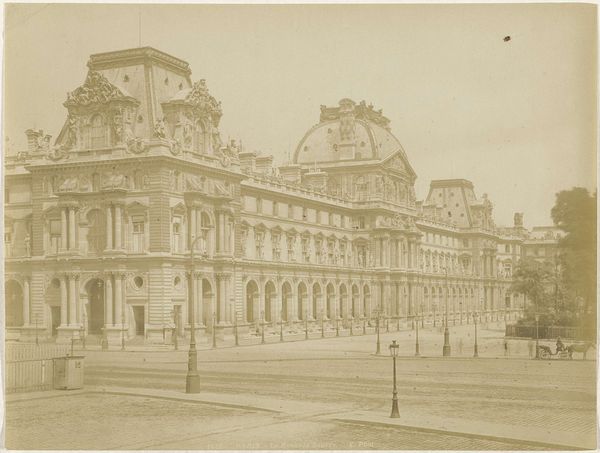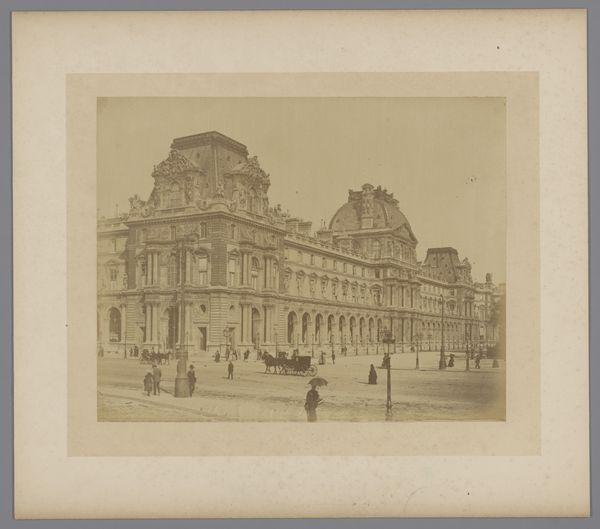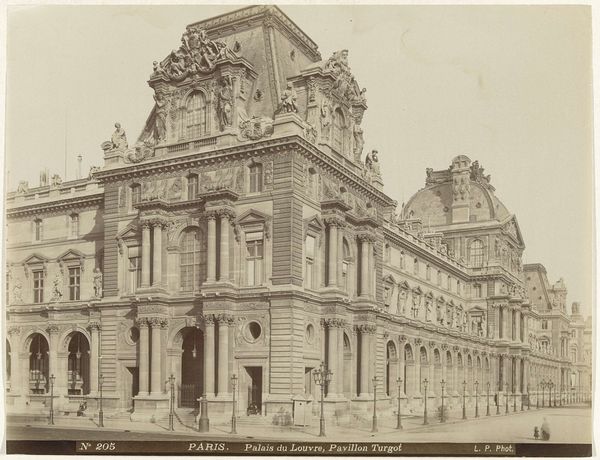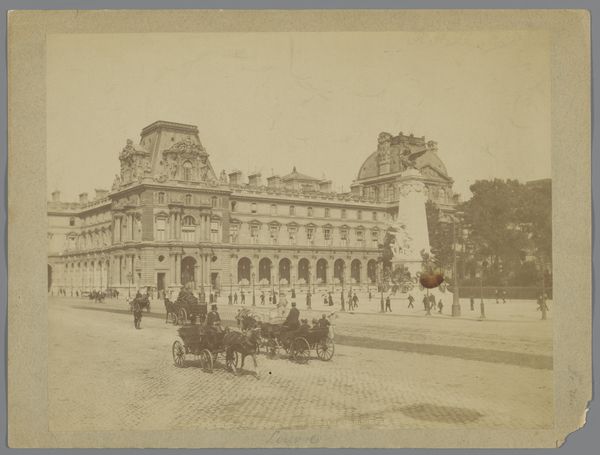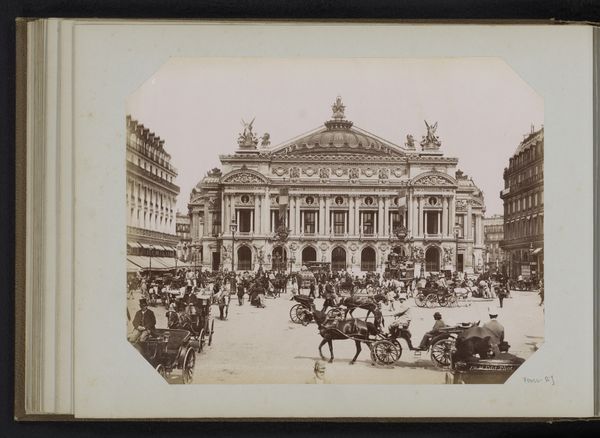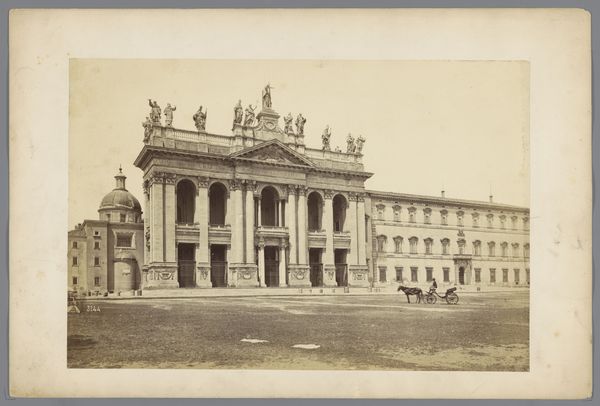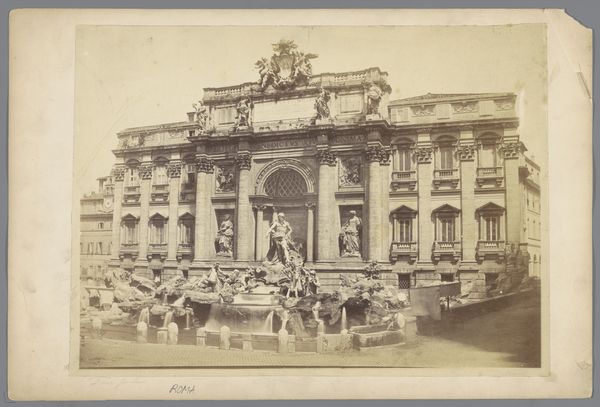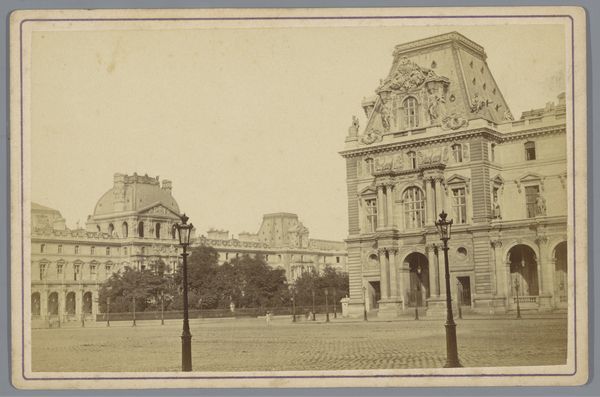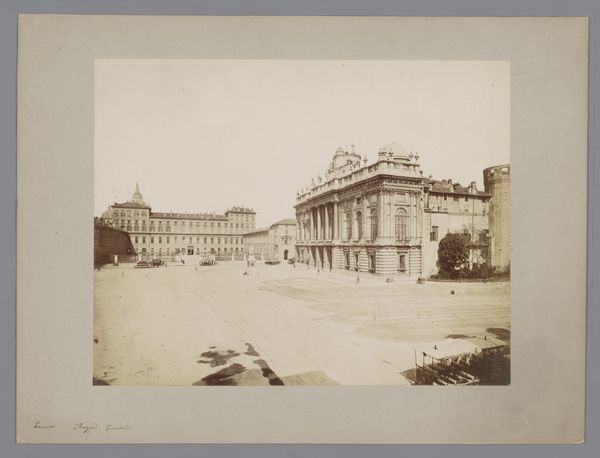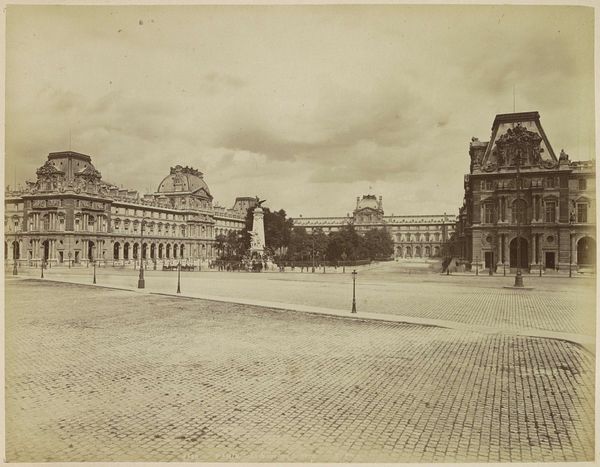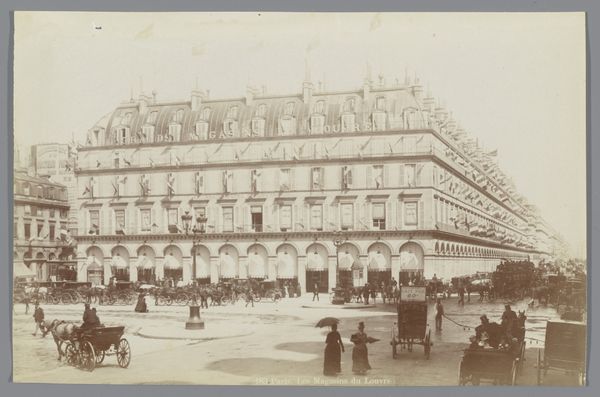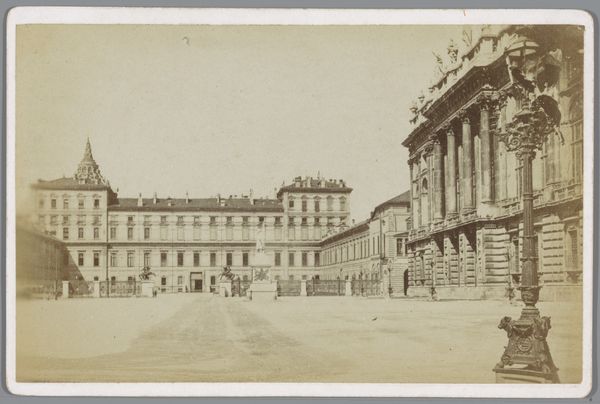
Dimensions: height 208 mm, width 267 mm, height 224 mm, width 276 mm
Copyright: Rijks Museum: Open Domain
This photograph captures the Louvre Palace in Paris, revealing the city's architectural grandeur. Note the rhythmic repetition of arches and columns that define the facade. These are not mere aesthetic choices but symbols deeply rooted in architectural history. The arch, for example, is not just a structural element, it has origins in Roman architecture, representing power and imperial order. Columns, reminiscent of classical temples, evoke a sense of timelessness and stability, connecting Parisian ambition to the glory of antiquity. We see this architectural language echoed throughout Europe, where rulers sought to legitimize their power by aligning themselves with the classical world. The Louvre, through its very design, tells a story of cultural memory, where symbols of the past are constantly reinterpreted to shape the present. Here, the psychological impact lies in the viewer’s subconscious recognition of power, order and historical continuity. The Louvre stands as a testament to the cyclical nature of symbols, constantly resurfacing and evolving through time.
Comments
No comments
Be the first to comment and join the conversation on the ultimate creative platform.
